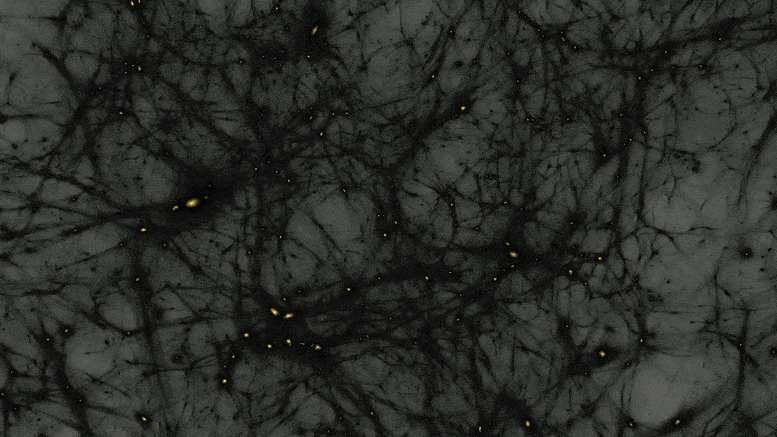
Dark matter simulation. Credit: Ralf Kaehler/SLAC National Accelerator Laboratory
For many years now, astronomers and physicists have been in a conflict. Is the mysterious dark matter that we observe deep in the Universe real, or is what we see the result of subtle deviations from the laws of gravity as we know them?
In 2016, Dutch physicist Erik Verlinde proposed a theory of the second kind: emergent gravity. New research, published in Astronomy & Astrophysics, pushes the limits of dark matter observations to the unknown outer regions of galaxies, and in doing so re-evaluates several dark matter models and alternative theories of gravity. Measurements of the gravity of 259,000 isolated galaxies show a very close relation between the contributions of dark matter and those of ordinary matter, as predicted in Verlinde’s theory of emergent gravity and an alternative model called Modified Newtonian Dynamics. However, the results also appear to agree with a computer simulation of the Universe that assumes that dark matter is ‘real stuff’.
The new research was carried out by an international team of astronomers, led by Margot Brouwer (RUG and UvA). Further important roles were played by Kyle Oman (RUG and Durham University) and Edwin Valentijn (RUG). In 2016, Brouwer also performed a first test of Verlinde’s ideas; this time, Verlinde himself also joined the research team.
Matter or gravity?
So far, dark matter has never been observed directly – hence the name. What astronomers observe in the night sky are the consequences of matter that is potentially present: bending of starlight, stars that move faster than expected, and even effects on the motion of entire galaxies. Without a doubt all of these effects are caused by gravity, but the question is: are we truly observing additional gravity, caused by invisible matter, or are the laws of gravity themselves the thing that we haven’t fully understood yet?
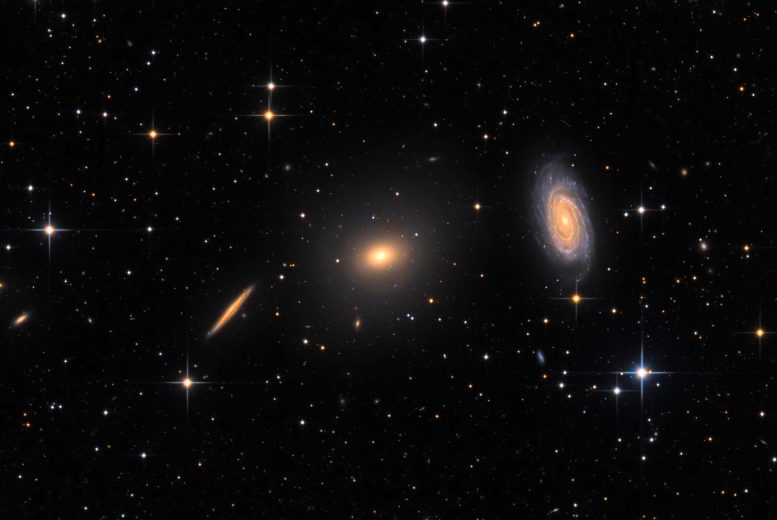
In the center of the image the elliptical galaxy NGC5982, and to the right the spiral galaxy NGC5985. These two types of galaxies turn out to behave very differently when it comes to the extra gravity – and therefore possibly the dark matter – in their outer regions. Credit: Bart Delsaert (www.delsaert.com)
To answer this question, the new research uses a similar method to the one used in the original test in 2016. Brouwer and her colleagues make use of an ongoing series of photographic measurements that started ten years ago: the KiloDegree Survey (KiDS), performed using ESO’s VLT Survey Telescope in Chili. In these observations, one measures how starlight from far away galaxies is bent by gravity on its way to our telescopes. Whereas in 2016 the measurements of such ‘lens effects’ only covered an area of about 180 square degrees on the night sky, in the meantime this has been extended to about 1000 square degrees – allowing the researchers to measure the distribution of gravity in around a million different galaxies.
Comparative testing
Brouwer and her colleagues selected over 259,000 isolated galaxies, for which they were able to measure the so-called ‘Radial Acceleration Relation’ (RAR). This RAR compares the amount of gravity expected based on the visible matter in the galaxy, to the amount of gravity that is actually present – in other words: the result shows how much ‘extra’ gravity there is, in addition to that due to normal matter. Until now, the amount of extra gravity had only been determined in the outer regions of galaxies by observing the motions of stars, and in a region about five times larger by measuring the rotational velocity of cold gas. Using the lensing effects of gravity, the researchers were now able to determine the RAR at gravitational strengths which were one hundred times smaller, allowing them to penetrate much deeper into the regions far outside the individual galaxies.
This made it possible to measure the extra gravity extremely precisely – but is this gravity the result of invisible dark matter, or do we need to improve our understanding of gravity itself?
Author Kyle Oman indicates that the assumption of ‘real stuff’ at least partially appears to work: “In our research, we compare the measurements to four different theoretical models: two that assume the existence of dark matter and form the base of computer simulations of our universe, and two that modify the laws of gravity – Erik Verlinde’s model of emergent gravity and the so-called ‘Modified Newtonian Dynamics’ or MOND.
“One of the two dark matter simulations, MICE, makes predictions that match our measurements very nicely. It came as a surprise to us that the other simulation, BAHAMAS, led to very different predictions. That the predictions of the two models differed at all was already surprising, since the models are so similar. But moreover, we would have expected that if a difference would show up, BAHAMAS was going to perform best. BAHAMAS is a much more detailed model than MICE, approaching our current understanding of how galaxies form in a universe with dark matter much closer. Still, MICE performs better if we compare its predictions to our measurements. In the future, based on our findings, we want to further investigate what causes the differences between the simulations.”
Young and old galaxies
Thus it seems that at least one dark matter model does appear to work. However, the alternative models of gravity also predict the measured RAR. A standoff, it seems – so how do we find out which model is correct? Margot Brouwer, who led the research team, continues: “Based on our tests, our original conclusion was that the two alternative gravity models and MICE matched the observations reasonably well. However, the most exciting part was yet to come: because we had access to over 259,000 galaxies, we could divide them into several types – relatively young, blue spiral galaxies versus relatively old, red elliptical galaxies.”
Those two types of galaxies come about in very different ways: red elliptical galaxies form when different galaxies interact, for example when two blue spiral galaxies pass by each other closely, or even collide. As a result, the expectation within the particle theory of dark matter is that the ratio between regular and dark matter in the different types of galaxies can vary. Models such as Verlinde’s theory and MOND on the other hand do not make use of dark matter particles, and therefore predict a fixed ratio between the expected and measured gravity in the two types of galaxies – that is, independent of their type. Brouwer: “We discovered that the RARs for the two types of galaxies differed significantly. That would be a strong hint towards the existence of dark matter as a particle.”
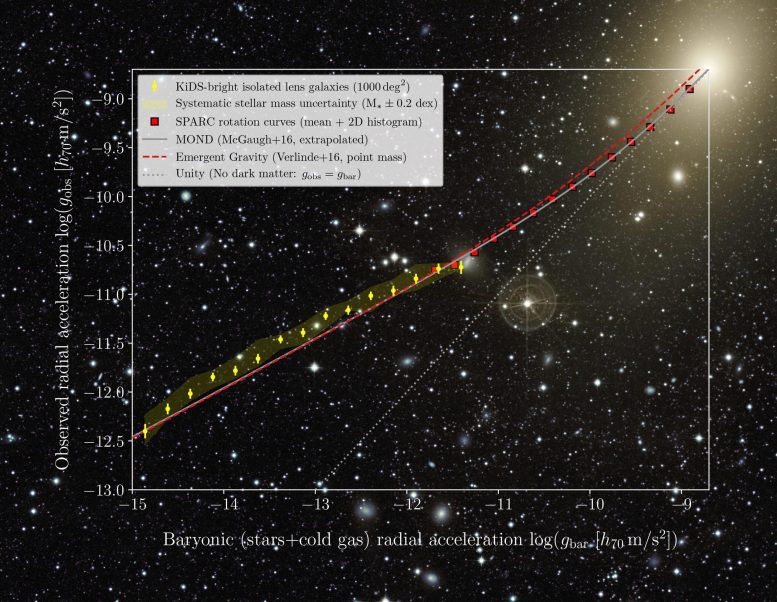
A plot showing the Radial Acceleration Relation (RAR). The background is an image of the elliptical galaxy M87, showing the distance to the center of the galaxy. The plot shows how the measurements range from high gravitational acceleration in the center of the galaxy, to low gravitational acceleration in the far outer regions. Credit: Chris Mihos (Case Western Reserve University) / ESO
However, there is a caveat: gas. Many galaxies are probably surrounded by a diffuse cloud of hot gas, which is very difficult to observe. If it were the case that there is hardly any gas around young blue spiral galaxies, but that old red elliptical galaxies live in a large cloud of gas – of roughly the same mass as the stars themselves – then that could explain the difference in the RAR between the two types.
To reach a final judgment on the measured difference, one would therefore also need to measure the amounts of diffuse gas – and this is exactly what is not possible using the KiDS telescopes. Other measurements have been done for a small group of around one hundred galaxies, and these measurements indeed found more gas around elliptical galaxies, but it is still unclear how representative those measurements are for the 259,000 galaxies that were studied in the current research.
Dark matter for the win?
If it turns out that extra gas cannot explain the difference between the two types of galaxies, then the results of the measurements are easier to understand in terms of dark matter particles than in terms of alternative models of gravity. But even then, the matter is not settled yet. While the measured differences are hard to explain using MOND, Erik Verlinde still sees a way out for his own model.
Verlinde: “My current model only applies to static, isolated, spherical galaxies, so it cannot be expected to distinguish the different types of galaxies. I view these results as a challenge and inspiration to develop an asymmetric, dynamical version of my theory, in which galaxies with a different shape and history can have a different amount of ‘apparent dark matter’.”
Therefore, even after the new measurements, the dispute between dark matter and alternative gravity theories is not settled yet. Still, the new results are a major step forward: if the measured difference in gravity between the two types of galaxies is correct, then the ultimate model, whichever one that is, will have to be precise enough to explain this difference. This means in particular that many existing models can be discarded, which considerably thins out the landscape of possible explanations. On top of that, the new research shows that systematic measurements of the hot gas around galaxies are necessary.
Edwin Valentijn formulates it as follows: “As observational astronomers, we have reached the point where we are able to measure the extra gravity around galaxies more precisely than we can measure the amount of visible matter. The counterintuitive conclusion is that we must first measure the presence of ordinary matter in the form of hot gas around galaxies, before future telescopes such as Euclid can finally solve the mystery of dark matter.”
Reference: “The weak lensing radial acceleration relation: Constraining modified gravity and cold dark matter theories with KiDS-1000” by Margot M. Brouwer, Kyle A. Oman, Edwin A. Valentijn, Maciej Bilicki, Catherine Heymans, Henk Hoekstra, Nicola R. Napolitano, Nivya Roy, Crescenzo Tortora, Angus H. Wright, Marika Asgari, Jan Luca van den Busch, Andrej Dvornik, Thomas Erben, Benjamin Giblin, Alister W. Graham, Hendrik Hildebrandt, Andrew M. Hopkins, Arun Kannawadi, Konrad Kuijken, Jochen Liske, HuanYuan Shan, Tilman Tröster, Erik Verlinde and Manus Visser, 22 June 2021, Astronomy & Astrophysics.
DOI: 10.1051/0004-6361/202040108

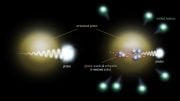





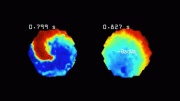

Neither. Dark Matter is not real. Half of it is baryons and the rest is cosmic “dust” which is charged.
Charge is what matter is. Look it up all particles are massed in electronVolts.
Gravity is misunderstood… It is the “ashes of electrical systems” and remnant charge dipoles.
CDM is pseudoscience.
Circulating dark matter causes collisions between baryonic matter which ionizes particles. Thus dark matter is the hidden half of plasma physics. Sorry I always get a charge out of telling people that.
ADC NOTE: CAN IT BE SAID THAT MATTER IS FORMED THROUGH THE POLARITY INTERACTION OF SUB ATOMIC PARTICLES?
THIS HYPOTHESIS WOULD SUPPORT THE CONCLUSION THAT A KNOWN UNIVERSAL FORCE, MAGNETISM AND IT’S POLARITY,
WERE THE FORMATIVE FORCES OF THE UNIVERSE.
ADOLFO DEL CASTILLO.
6/24/2021
SEE The hunt for a primordial force that would revolutionise cosmology | New Scientist
Dark matter is now understood to be smoothly distributed throughout our Universe. Dark matter is the spacetime fabric. Dark matter is also now understood to be pushed out by stars. The dark matter displaced by the quarks the Sun consists of, pushing back and exerting pressure toward the Sun, keeps the Earth in orbit about the Sun. The dark matter displaced by the quarks a galaxy consists of, pushing back and exerting pressure toward the galaxy, causes the stars to orbit the galactic center at the rate in which they do.
Curved spacetime is a geometrical representation of gravity.
Displaced dark matter is the physical manifestation of gravity.
What is referred to geometrically as curved spacetime physically exists as displaced dark matter.
A galaxy’s halo is not a clump of dark matter traveling with the galaxy. A galaxy’s halo is dark matter that is displaced by the galaxy.
The ‘missing mass’ associated with dark matter is the mass of the dark matter connected to and neighboring a galaxy which is displaced by the galaxy.
The galaxies which are mistaken for missing dark matter are too diffuse to displace the dark matter to such an extent as to cause the lensing of the light as it passes by the galaxy.
‘Dark Matter More Ubiquitous Than We Ever Thought’
https://www.inverse.com/article/24863-dark-matter-might-be-smoother-than-we-thought
> “dark matter is smooth, distributed more evenly throughout space than we thought”
‘Dark matter is on the move: Scientists find the elusive material can be pushed out of a galaxy’s center by star formation’
https://www.dailymail.co.uk/sciencetech/article-6554999/Dark-matter-Scientists-material-pushed-galaxys-center.html
> “‘The dark matter at the centres of star-forming dwarfs appears to have been “heated up” and pushed out.’”
Dark matter is smoothly distributed and pushed out by stars
Another possibility, from a view of String Theory, is that Dark Matter appears to us as an effect of string/anti-string annihilations. As you may know, quantum mechanics requires that strings must be formed as pairs in the quantum foam – a string and an anti-string – that immediately annihilate each other. Quantum mechanics also requires both the string and anti-string to be surrounded by “jitters” that reduce their monstrous vibrating energies. What if this jitter remains for a fraction of an instant after their string/anti-string annihilations? This temporary jitter would be seen by us as matter, via E=mc2, for that instant before it too returns to the foam. That’s why we never see it – the “mass” lasts only for that instant but is repeated over and over and over, all over. Specifics on this can be found in my YouTube at https://www.youtube.com/watch?v=N84yISQvGCk
Dark Matter as Cold Atomic Hydrogen in Its Lower Ground State
By Eugene Terry Tatum
Submitted: January 24th 2020Reviewed: February 11th 2020Published: March 20th 2020
DOI: 10.5772/intechopen.91690
I expected that the acronyms MICE and BAHAMAS would be elaborated as MOND has been. I ended up reading the article not knowing in which, exactly is Verlinde’s hypothesis involved.
Neither. There’s no dark matter, and the force that is applied is magnetism not gravity, so gravity is perfectly fine the way it is. Either that or electromagnetic interaction of moving charges (in the case of inter-galactic threads).
Reading this article, my horizons are broadened, and I’m motivated to study and catch up on my knowledge of astrophysics.
Just one small thing. Paragraph 5 line 4 “the KiloDegree Survey (KiDS), performed using ESO’s VLT Survey Telescope in Chili…”. It should be Chile.
… no dark matter, yes dark matter…
Well, there are the galaxies that don’t need the dark matter, and that should tell something about the dark matter and all those theories. Could one observe the gas around galaxies without the dark matter../.
Black Holes are the result of a
matter anti-matter disintegration, effecting Space/Time and are
entangled intergalactic multi-dimensional gravity fields, where
Space/Time sub atomic particles (dark matter) along with other
exotic multi-dimensional energies (dark energy) are continually
changing Space/Time Gravity fields in areas of their influence in
the galaxy. In the future if these exotic and unique Space/Time
matter energy interactions could be harnessed, and if understood,
these exotic multi-dimensional entangled Gravity fields influence
of Space/Time could be used for space travel in the Galaxies.
Why do scientists ignore the strong contributing effects from all the galactic scale magnetic fields and electrically charged plasmas they have found?
These are treated as though they are completely inert, and contribute nothing to the equation. There is no rational reason for excluding these effects.
Of course, if scientists do start including real, measureable phenomena such as these, there are an awful lot of Dark Matter theorists who might be out of work.